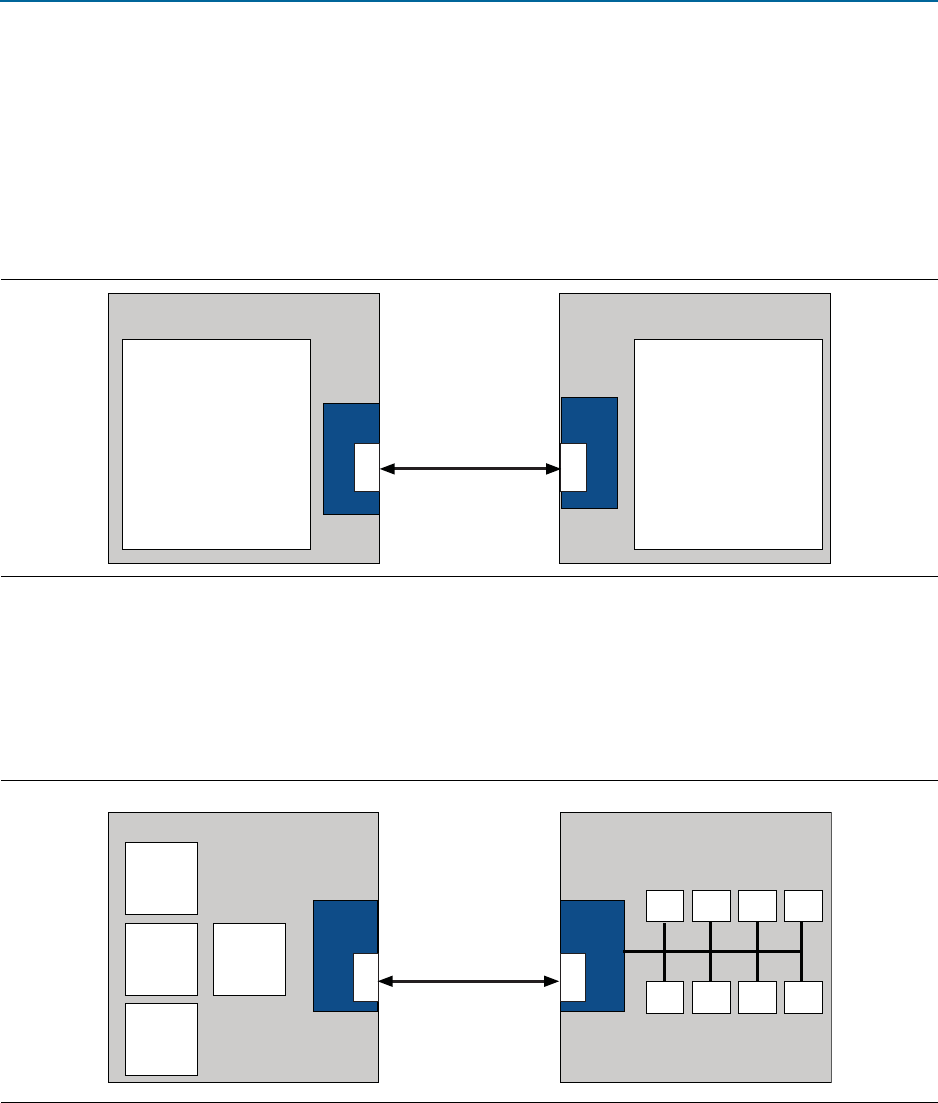User guide
Table Of Contents
- Cyclone V Hard IP for PCI Express User Guide
- Contents
- 1. Datasheet
- 2. Getting Started with the Cyclone V Hard IP for PCI Express
- 3. Getting Started with the Avalon-MM Cyclone Hard IP for PCI Express
- Running Qsys
- Customizing the Cyclone VHard IP for PCI Express IP Core
- Adding the Remaining Components to the Qsys System
- Completing the Connections in Qsys
- Specifying Clocks and Interrupts
- Specifying Exported Interfaces
- Specifying Address Assignments
- Simulating the Example Design
- Simulating the Single DWord Design
- Understanding Channel Placement Guidelines
- Adding Synopsis Design Constraints
- Creating a Quartus II Project
- Compiling the Design
- Programming a Device
- 4. Parameter Settings for the Cyclone V Hard IP for PCI Express
- 5. Parameter Settings for the Avalon-MM Cyclone V Hard IP for PCI Express
- 6. IP Core Architecture
- Key Interfaces
- Protocol Layers
- Multi-Function Support
- PCI Express Avalon-MM Bridge
- Avalon-MM Bridge TLPs
- Avalon-MM-to-PCI Express Write Requests
- Avalon-MM-to-PCI Express Upstream Read Requests
- PCI Express-to-Avalon-MM Read Completions
- PCI Express-to-Avalon-MM Downstream Write Requests
- PCI Express-to-Avalon-MM Downstream Read Requests
- Avalon-MM-to-PCI Express Read Completions
- PCI Express-to-Avalon-MM Address Translation for Endpoints
- Minimizing BAR Sizes and the PCIe Address Space
- Avalon-MM-to-PCI Express Address Translation Algorithm
- Single DWord Completer Endpoint
- 7. IP Core Interfaces
- Cyclone V Hard IP for PCI Express
- Avalon-MM Hard IP for PCI Express
- Physical Layer Interface Signals
- Test Signals
- 8. Register Descriptions
- Configuration Space Register Content
- Altera-Defined Vendor Specific Extended Capability (VSEC)
- PCI Express Avalon-MM Bridge Control Register Access Content
- Avalon-MM to PCI Express Interrupt Registers
- PCI Express Mailbox Registers
- Avalon-MM-to-PCI Express Address Translation Table
- Root Port TLP Data Registers
- Programming Model for Avalon-MM Root Port
- PCI Express to Avalon-MM Interrupt Status and Enable Registers for Root Ports
- PCI Express to Avalon-MM Interrupt Status and Enable Registers for Endpoints
- Avalon-MM Mailbox Registers
- Correspondence between Configuration Space Registers and the PCIe Spec 2.1
- 9. Reset and Clocks
- 10. Transaction Layer Protocol (TLP) Details
- 11. Interrupts
- Interrupts for Endpoints Using the Avalon-ST Application Interface
- Interrupts for Root Ports Using the Avalon-ST Interface to the Application Layer
- Interrupts for Endpoints Using the Avalon-MM Interface to the Application Layer
- Interrupts for End Points Using the Avalon-MM Interface with Multiple MSI/MSI-X Support
- 12. Optional Features
- 13. Flow Control
- 14. Error Handling
- 15. Transceiver PHY IP Reconfiguration
- 16. SDC Timing Constraints
- 17. Testbench and Design Example
- Endpoint Testbench
- Root Port Testbench
- Chaining DMA Design Examples
- Test Driver Module
- Root Port Design Example
- Root Port BFM
- BFM Procedures and Functions
- 18. Debugging
- A. Transaction Layer Packet (TLP) Header Formats
- Additional Information

Chapter 1: Datasheet 1–5
Debug Features
December 2013 Altera Corporation Cyclone V Hard IP for PCI Express
User Guide
Optimized for Altera devices, the Cyclone V Hard IP for PCI Express supports all
memory, I/O, configuration, and message transactions. It has a highly optimized
Application Layer interface to achieve maximum effective throughput. You can
customize the Hard IP to meet your design requirements using either the
MegaWizard
Plug-In Manager or the Qsys design flow.
Figure 1–1 shows a PCI Express link between two Cyclone V FPGAs. One is
configured as a Root Port and the other as an Endpoint.
Figure 1–2 shows a PCI Express link between two Altera FPGAs. One is configured as
a Root Port and the other as a multi-function Endpoint. The FPGA serves as a custom
I/O hub for the host CPU. In the Cyclone V FPGA, each peripheral is treated as a
function with its own set of Configuration Space registers. Eight multiplexed
functions operate using a single PCI Express link.
Debug Features
The Cyclone V Hard IP for PCI Express includes debug features that allow
observation and control of the Hard IP for faster debugging of system-level problems.
For more information about debugging refer to Chapter 19, C**Debugging.
Figure 1–1. PCI Express Application with a Single Root Port and Endpoint
Altera FPGA
User Application
Logic
PCIe
Hard IP
RP
PCIe
Hard IP
EP
User Application
Logic
PCI Express Link
Altera FPGA
Figure 1–2. PCI Express Application with an Endpoint Using the Multi-Function Capability
Arria V or Cyclone V FPGA
PCIe Hard
IP Multi-
Function
EP
CAN GbE ATA PCI
Altera FPGA
PCIe
Hard IP
RP
Host
CPU
Memory
Controller
Peripheral
Controller
Peripheral
Controller
USB
SPI GPIO
I2C
PCI Express Link










